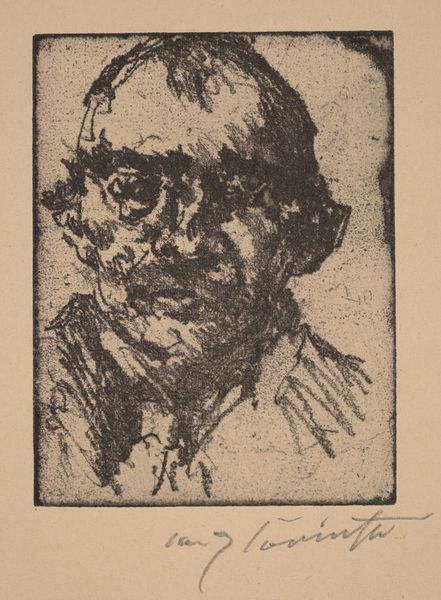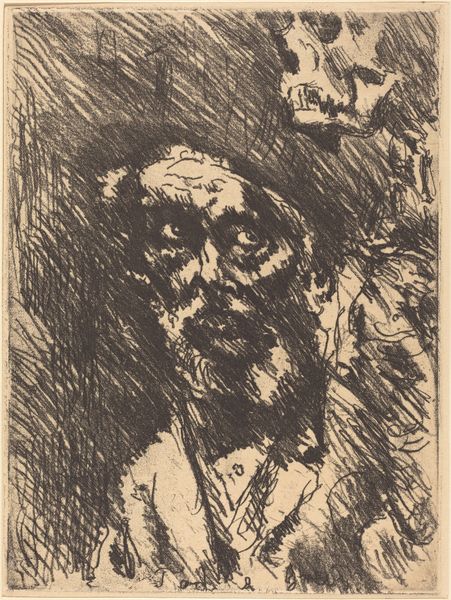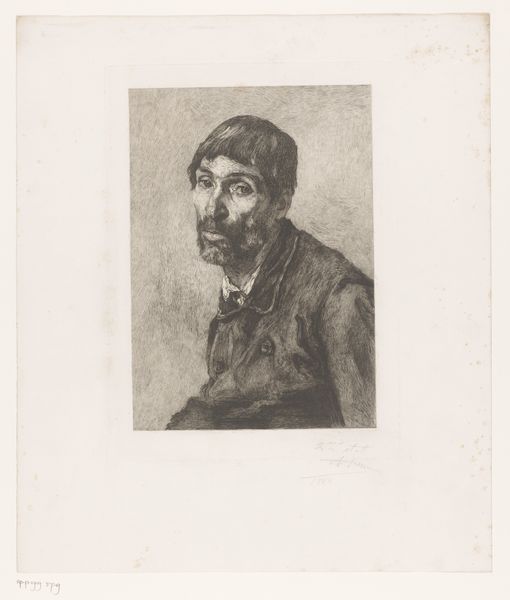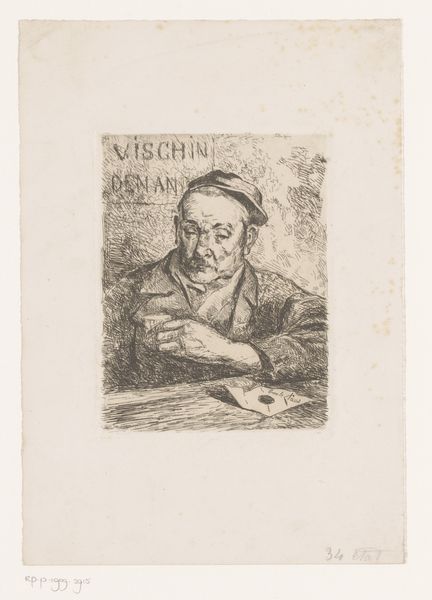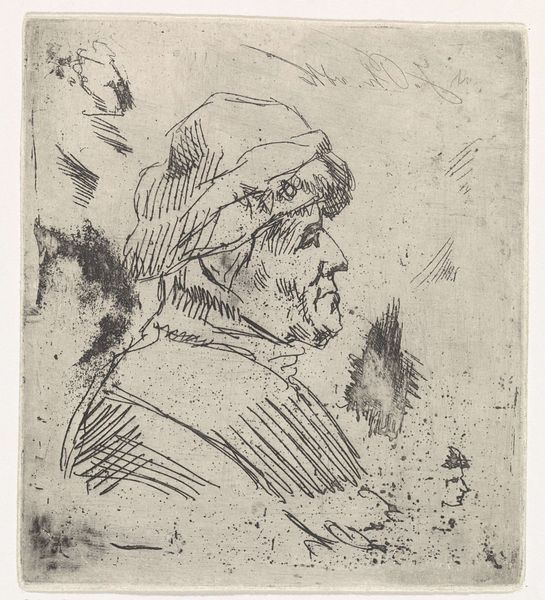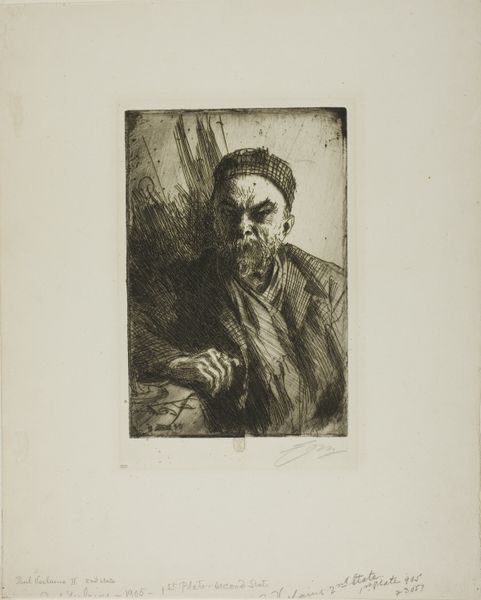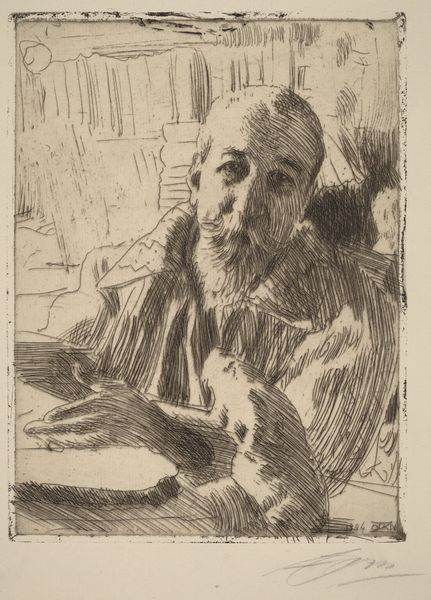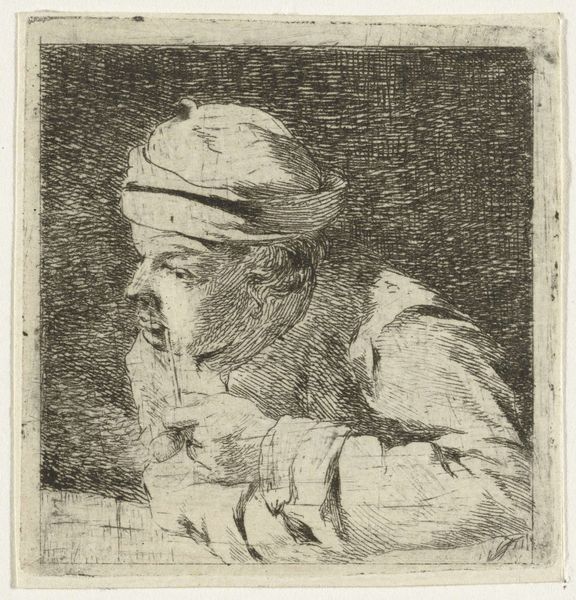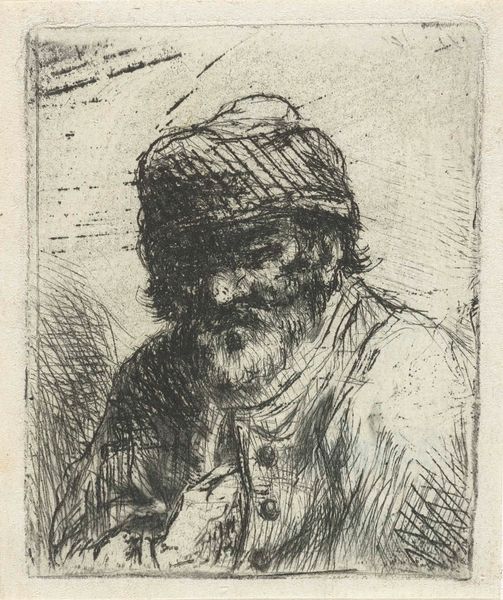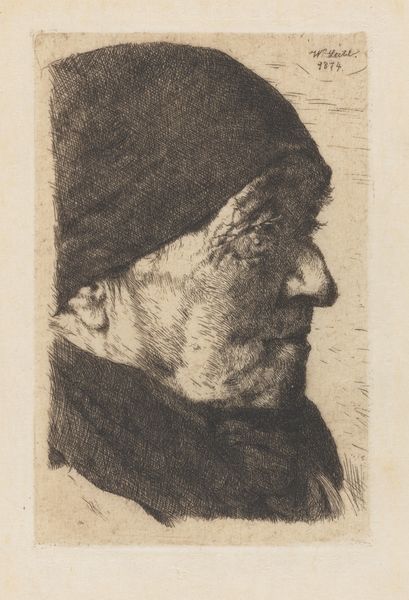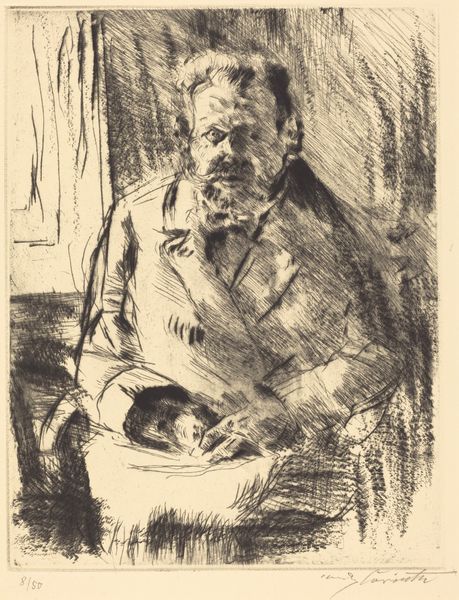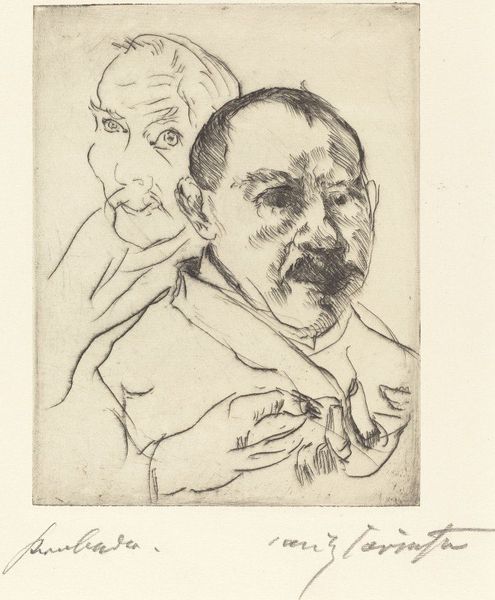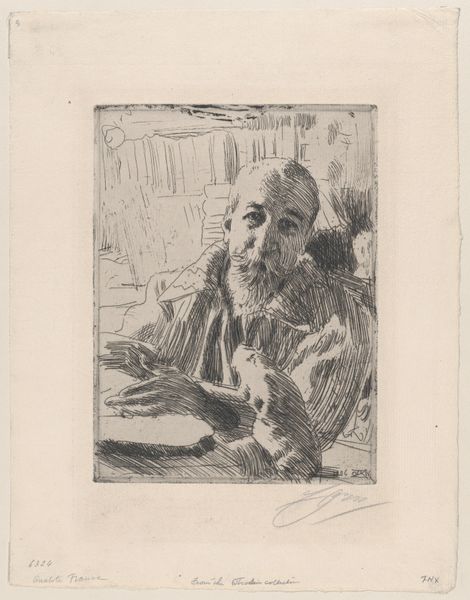
print, etching, ink
#
portrait
#
self-portrait
# print
#
pen sketch
#
etching
#
german-expressionism
#
figuration
#
ink
#
expressionism
Dimensions: plate: 15 x 10.8 cm (5 7/8 x 4 1/4 in.) sheet: 46.6 x 32 cm (18 3/8 x 12 5/8 in.)
Copyright: National Gallery of Art: CC0 1.0
Curator: At first glance, this work’s rawness strikes me—a potent emotional energy radiates outward. Editor: This is "Self-Portrait," an etching by Lovis Corinth created in 1912. It’s a superb example of his graphic work. Curator: Knowing Corinth, who lived through enormous shifts in German society at the turn of the century, I’m immediately considering how the artist uses his own image to mirror the destabilizing cultural shifts he witnessed. German Expressionism was never just about aesthetic choices; it reflected societal unease. Editor: Agreed. Corinth’s masterful use of line certainly evokes a sense of agitation, it’s visible in every part of the print. Look closely at how the lines are so chaotic in the background, yet precise in capturing the artist's gaze, this duality enhances the portrait’s visual interest. Curator: And consider how that gaze confronts the viewer—there is no idealization, but a stark representation. For Corinth, influenced by social realism, the individual’s interiority is not separate from the social sphere but reflective of its contradictions and pressures. Editor: Precisely. There's a strong interplay between dark and light; it seems almost as if Corinth’s own hand is consumed in darkness. I think, this particular print demonstrates the skill with which the artist rendered the contrast of chiaroscuro using the medium of etching. Curator: Also, don't you think there is some implied social commentary within the work too? One can understand the historical importance of artistic self-representation to cultural narrative and what an artist represents within that. Editor: Definitely. Analyzing the expressive elements, we see how the gestural marks articulate not only his likeness but his psyche—it's quite revealing. Curator: Exploring art within socio-political contexts allows us to re-evaluate art through different perspectives and appreciate how they can hold meaning within them. Editor: I see Corinth's exploration of tone through line to emphasize that revealing psychological intensity within the composition and its aesthetic depth.
Comments
No comments
Be the first to comment and join the conversation on the ultimate creative platform.
